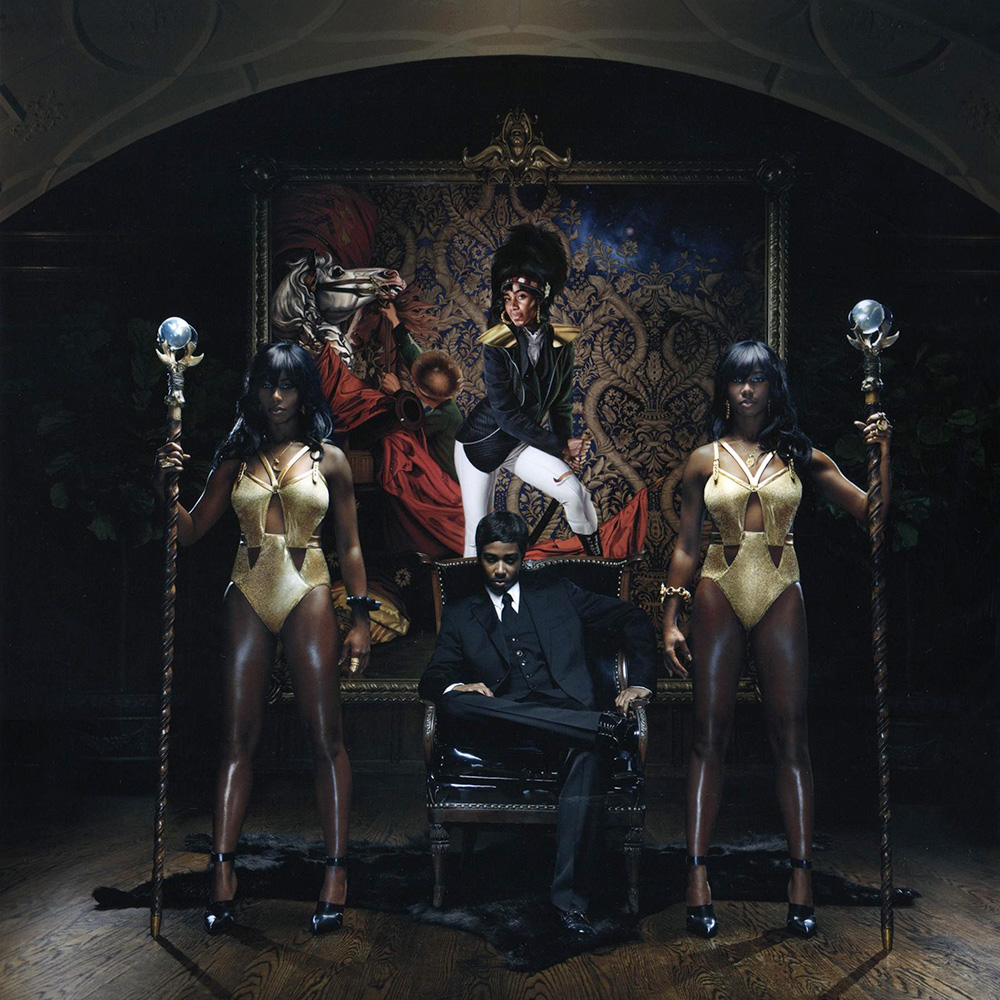
Four years ago, when lines between the struggling fringe artists and moneyed pop favorites were drawn more cleanly, Santi White– then known as Santogold– played an important role representing the underdogs and the outcasts. “Brooklyn, we go hard/ We on the look for the advantage, we work hard,” she sang on “Shove It”, the outer-borough banger that Jay-Z eventually rapped over. Part A&R rep (she’d worked at Epic Records and once wrote material for singers like Lily Allen and Ashlee Simpson) and part punk (she fronted a new-wave grunge act from Philly called Stiffed), she wanted the corporate pop machine she mingled with to know she was batting for the creative underclass. Her debut was chock full of declarations of authenticity like, “That shit must hurt real bad/ Fakin’ what you wish you had.” But what happens when your creative underclass hops in bed with the corporate pop machine on its own accord?
This is the dilemma White faces four years removed from her genre-blending debut. Four years that have blurred indie/corpo, authentic/fake, pop/rock dichotomies to the point of irrelevance. White’s long-time producer Switch, for example, started out shaping the sound of the global underground as one half of Major Lazer and wound up repurposing it for none other than Beyoncé. “I remember when Switch went to work on Beyoncé’s record,” White said in a recent interview. “I had actually… played Beyoncé Major Lazer’s ‘Pon de Floor’ and she was like, ‘That’s amazing.'” It was only a matter of time before that beat found itself on 4’s lead single “Run the World (Girls)” and the accompanying music video racked up 133 million YouTube views. “I was working with Switch at the time and I was like, ‘OK, Switch, we’re working tomorrow?'” White explained. “And he was like, ‘Actually, I’m working with Beyoncé.'”
Perhaps realizing words like, “Taint my mind but not my soul/ Tell you I got fire/ I won’t sell it for no payroll” would ring hollow, White has switched the overarching message to something a bit more personal this time around: Don’t put me in a box, I’m in control, and I can be as many different things at the same time as I want to be. On the Kehinde Wiley-designed cover she appears as three different characters– a valiant Napoleonic type next to a horse in a painting, a man perched arrogantly in a chair in a suit, and a sex kitten/warrior woman figure in a lamé one-piece. Unfortunately, the record doesn’t deliver on the bold promise to explore a fantastical assortment of characters. Instead it offers a polished assortment of tidily global-sounding, mid-tempo pop tunes that seem to end before they ever kick off, strung together by a checklist of semi-impassioned capital-K Keywords: Youth, Machine, Riot, Fame, Freak, Pirate, Keepers.
A telling moment arrives on “Freak Like Me”, a thorny, gyrating standout that jolts you from the record’s lull. After a few listens you realize why: The track repurposes the tune of “Rich Girl”, the adaptation of a Fiddler on the Roof song popularized by Louchie Lou & Michie One in the 1990s and then by Gwen Stefani and Eve in 2004 (come to think of it, Santigold’s ear for the crossover potential of ska, dub, and punk-pop shares more with Stefani than it does with M.I.A., someone to whom she’s constantly compared). It doesn’t spell good things for the rest of the album that one of its boldest-sounding songs grabs at familiar low-hanging fruit.
Despite the star-studded grab-bag of a production roster that includes Q-Tip, TV on the Radio’s Dave Sitek, Boys Noize, and Yeah Yeah Yeahs’ Nick Zinner, the record flattens into a glossy collection of effortless dub-tronica that’s oddly lacking in texture. The closest White plays to actual make-believe is on “Look at These Hoes”, a diss track with a lurking throttle of a beat over which Santi appropriates a snide rap persona, spitting “Look at me/ Then look at these hoes/ These bitches ain’t fuckin’ with me.” The tension between earnestly pissed and mockingly caustic makes for the record’s most engaging track. The remainder is primed for play in, say, the dressing rooms at a hip clothing chain or downtown hotel bar– a fate that almost seems tragic given White’s allegiance to opposing ideologies and aesthetic decisions.
At this point it’s difficult to discern whether Master of My Make-Believe is disappointingly inert because it’s actually unadventurous or because the rest of the world has simply caught up with White. Would the fusion of twinkling electronic dub with shreddier undertones on the anthemic “Disparate Youth” be more interesting if we didn’t have bands like Sleigh Bells melting bubblegum sensibilities into punishing guitar shriek? Or if each week didn’t bring a ceaseless wave of remixes pairing artists who never would have appeared in the same mp3 tag three years ago? They’re questions White herself is yearning to answer, and struggling. She acknowledges it on the appropriately titled ballad “The Riot’s Gone”, singing: “I’ve been searching for an angle/ For a cause I can’t defend.” She’ll admit she knows better than anyone that fight music is hard to make when you can’t figure out what you’re fighting against.
